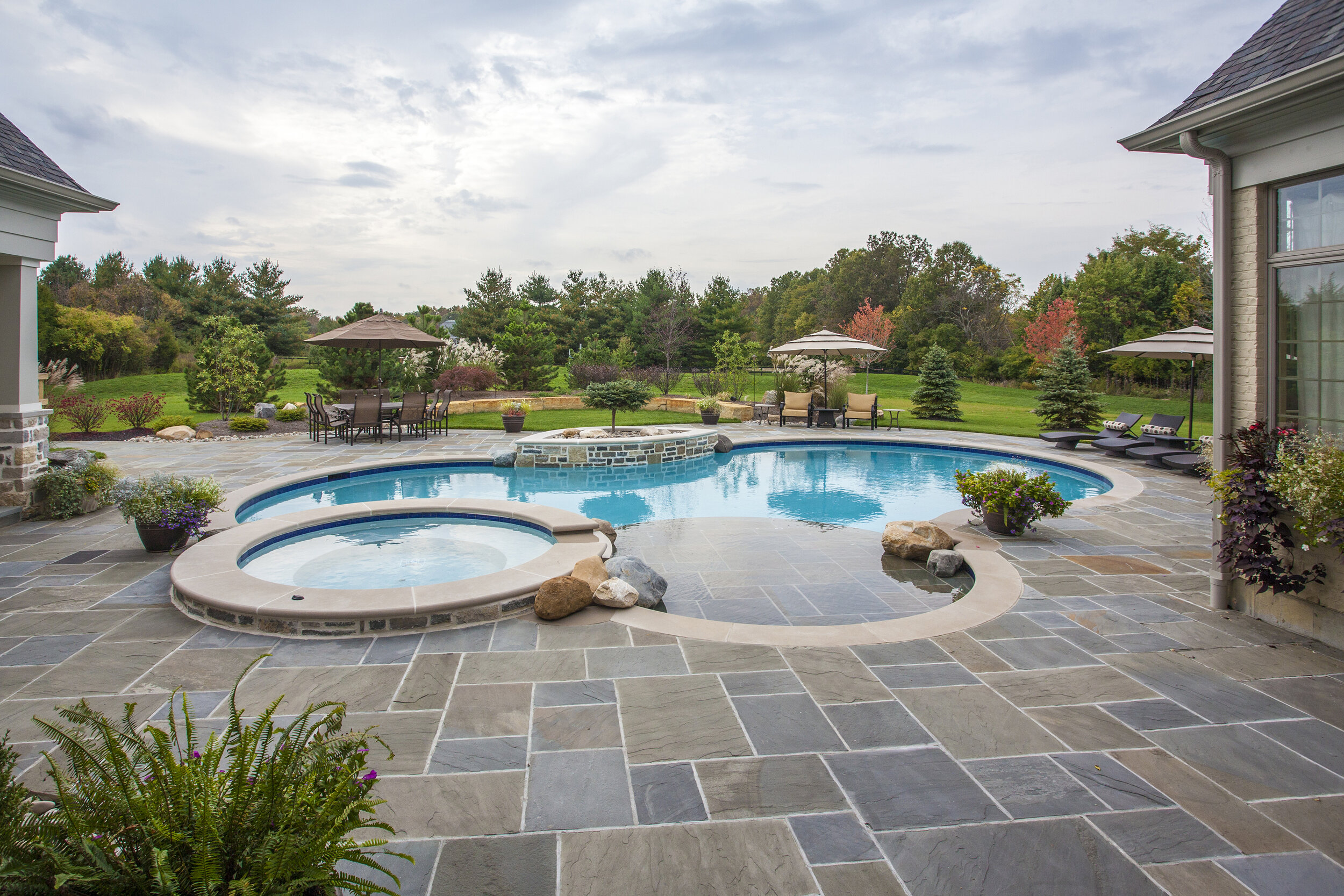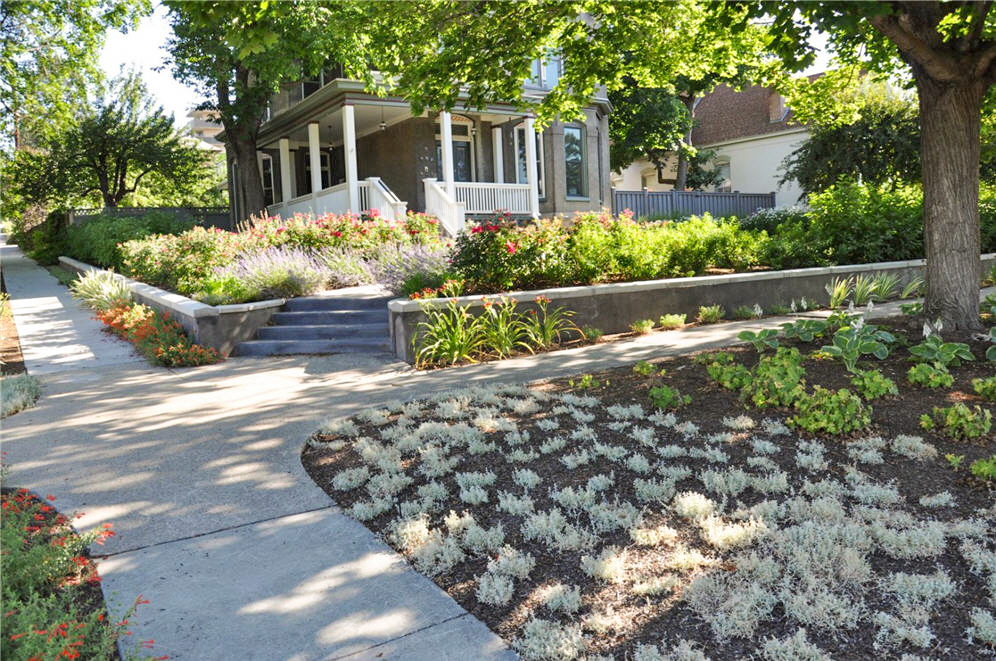Deal with a Trusted Landscaping Company to Bring Your Vision to Life
The Significance of Recognizing Different Kinds of Landscape Design for Your Garden
Recognizing the various kinds of landscaping is a crucial element in crafting a yard that not just shows individual taste yet also fulfills environmental needs. Each landscaping design-- be it formal, cottage, lasting, or city-- provides distinctive advantages that can dramatically affect the general wellness and aesthetics of your exterior room. This knowledge is essential in fostering biodiversity and enhancing source usage. Nonetheless, the effects of these selections prolong past plain appearances, elevating questions regarding exactly how each kind can be integrated properly right into your certain setting. What factors to consider should lead your option?
Advantages of Landscape Design Understanding
Comprehending the basics of landscaping offers countless benefits for both newbie and seasoned gardeners alike. A solid grasp of landscape design principles makes it possible for people to produce useful and visually enticing outside rooms that line up with their individual preferences and the specific attributes of their gardens.
One considerable benefit is enhanced ecological health and wellness. Expertise of native plants and lasting practices permits gardeners to grow ecosystems that advertise biodiversity while minimizing the requirement for chemical plant foods and pesticides. Furthermore, understanding soil kinds and drainage can result in much healthier plant growth and minimized erosion.
Landscaping understanding additionally enhances the aesthetic value of a residential property. By discovering about style components such as range, appearance, and shade, garden enthusiasts can create natural and inviting landscapes that enhance visual charm. This not just boosts personal enjoyment however can also improve building worth.
Additionally, notified gardeners can save time and resources. Acknowledging the right plants for certain problems, such as light and dampness degrees, makes certain that initiatives are not thrown away on improper options. Inevitably, a thorough understanding of landscape design encourages people to make enlightened choices, promoting a much more satisfying horticulture experience.
Introduction of Landscaping Types
Landscaping incorporates a selection of designs and strategies, each customized to satisfy the distinct needs and preferences of garden enthusiasts. Recognizing these varied types is crucial for creating an exterior room that lines up with ecological considerations and individual preferences.
One prominent kind is typical landscape design, defined by structured formats, well-defined flowerbeds, and the use of balanced plantings. This style frequently emphasizes a feeling of order and harmony within the yard - Commercial Landscaping. In contrast, naturalistic landscape design focuses on mimicking the elegance of nature, using organic kinds and indigenous plants to create a much more relaxed and casual environment
Lasting landscaping has actually gained grip, promoting eco-friendly methods that conserve water and minimize chemical use. This technique often integrates xeriscaping, which uses drought-resistant plants appropriate for dry climates. In addition, metropolitan landscape design addresses the challenges of restricted space in city settings, frequently making use of upright yards and rooftop areas to maximize greenery.
Official Landscape Design Clarified
Characterized by its careful layout and structured aspects, official landscape design creates an environment of style and elegance in exterior rooms. This style emphasizes balance, geometric forms, and distinct lines, frequently integrating polished bushes, topiaries, and orderly flower beds. The general result is a refined and refined atmosphere that accentuates building features and improves the YOURURL.com charm of the bordering landscape.
In formal landscaping, paths are commonly straight and may be lined with consistent materials such as brick or rock. These courses often bring about focal factors such as water fountains, sculptures, or decorative trees, even more improving the structured nature of the design. Color palettes tend to be more limited, concentrating on unified mixes that advertise a tranquil environment.
Water functions in formal landscapes are usually designed with accuracy, usually showing up as rectangle-shaped or circular pools. The mindful positioning of plants is vital, with types chosen for their ability to keep a clean look throughout the seasons. In general, formal landscape design is suitable for those that appreciate order and beauty, offering a timeless visual that can substantially boost the value and charm of outdoor areas.
Home Garden Features
Cottage yards commonly evoke a feeling of charm and fancifulness, blending a selection of plants in a seemingly careless yet harmonious setup. Defined by their lavish, informal format, these gardens commonly feature a diverse mix of flowering perennials, natural herbs, annuals, and vegetables. This diverse growing not only produces aesthetic passion however additionally attracts valuable bugs and advertises a well balanced community.
A crucial characteristic of cottage yards is their use of standard materials and frameworks. Rock paths, rustic secure fencing, and wooden trellises are frequently incorporated to improve the yard's quaint charm. In addition, the addition of seating locations, such as benches or arbors, urges relaxation within this calm environment.
Shade plays a look at here now considerable duty in cottage gardens, with an emphasis on soft pastels and vivid colors that evoke a feeling of nostalgia. Blossoms like hollyhocks, foxgloves, and roses are staples, usually intermingled with aromatic natural herbs such as lavender and thyme.
Cottage yards mirror an approach of welcoming nature's unpredictability, resulting in an one-of-a-kind and inviting room. By prioritizing biodiversity and aesthetic beauty, they develop an attractive setup for both yard lovers and laid-back onlookers alike.
Sustainable Landscaping Practices
Including lasting landscape design methods is necessary for producing eco-friendly gardens that thrive while minimizing their eco-friendly influence. Commercial Landscaping. Sustainable landscaping concentrates on the efficient use sources, promoting biodiversity, and enhancing the natural surroundings
One key practice is choosing native plants, which are well-adapted to neighborhood conditions and call for less water, fertilizer, and chemicals. This not only preserves resources but additionally supports neighborhood wild animals, including pollinators. Applying water-efficient irrigation systems, such as drip watering or rainwater harvesting, further preserves water while guaranteeing that plants receive appropriate moisture.

Moreover, decreasing grass locations and incorporating hardscaping aspects can decrease maintenance and resource use. These methods advertise an even more sustainable landscape that requires fewer inputs and supplies eco-friendly advantages. By embracing these methods, garden enthusiasts imp source can develop rooms that are not just gorgeous however likewise add favorably to the setting, cultivating a harmonious balance between nature and human activity.

Conclusion
In conclusion, a comprehensive understanding of numerous landscaping kinds is necessary for producing a cosmetically pleasing and ecologically sustainable yard. Ultimately, embracing varied landscape design strategies fosters an unified relationship between outside areas and their settings, advertising long-lasting environmental balance.
Recognizing the numerous types of landscape design is a necessary element in crafting a yard that not only shows personal taste yet also satisfies ecological requirements. Each landscape design style-- be it formal, home, sustainable, or metropolitan-- gives distinct advantages that can dramatically influence the general wellness and looks of your outdoor space. In comparison, naturalistic landscape design concentrates on imitating the appeal of nature, making use of natural kinds and native plants to produce a much more loosened up and informal atmosphere.
In addition, city landscaping addresses the challenges of restricted area in city settings, often utilizing vertical gardens and rooftop areas to maximize greenery.
In conclusion, an extensive understanding of different landscape design kinds is necessary for developing a cosmetically pleasing and environmentally sustainable garden. (Commercial Landscaping)